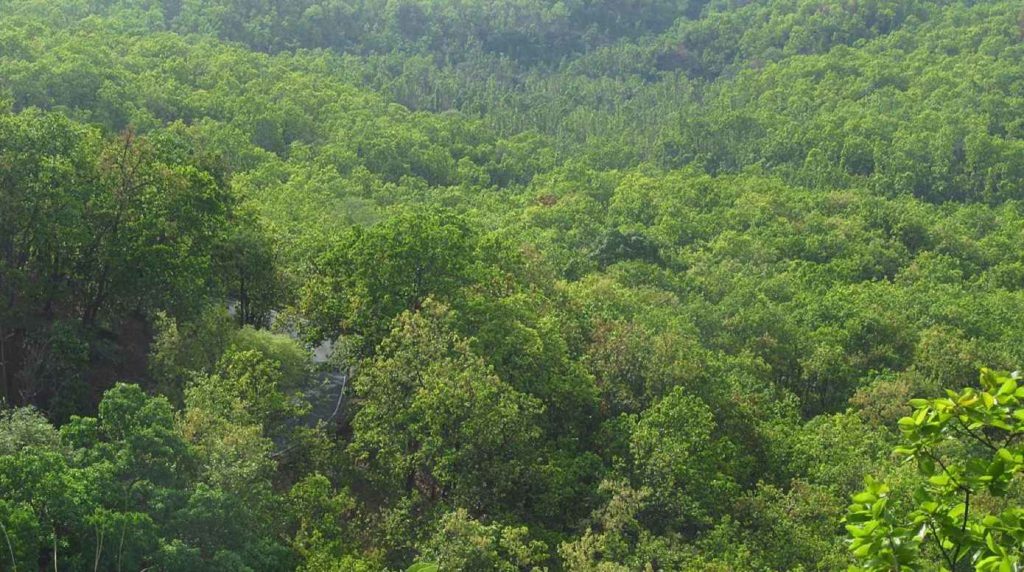- Courses
- GS Full Course 1 Year
- GS Full Course 2 Year
- GS Full Course 3 Year
- GS Full Course Till Selection
- Answer Alpha: Mains 2025 Mentorship
- MEP (Mains Enrichment Programme) Data, Facts
- Essay Target – 150+ Marks
- Online Program
- GS Recorded Course
- Polity
- Geography
- Economy
- Ancient, Medieval and Art & Culture AMAC
- Modern India, Post Independence & World History
- Environment
- Governance
- Science & Technology
- International Relations and Internal Security
- Disaster Management
- Ethics
- NCERT Current Affairs
- Indian Society and Social Issue
- NCERT- Science and Technology
- NCERT - Geography
- NCERT - Ancient History
- NCERT- World History
- NCERT Modern History
- CSAT
- 5 LAYERED ARJUNA Mentorship
- Public Administration Optional
- ABOUT US
- OUR TOPPERS
- TEST SERIES
- FREE STUDY MATERIAL
- VIDEOS
- CONTACT US
Outdated Forest Data of Forest Survey of India
Outdated Forest Data of Forest Survey of India

Why in the News?
- There is a growing concern that India’s current forest management system is not suitable for protecting and restoring sensitive forest regions like the Western Ghats.
- The Green India Mission, which depends on data provided by Forest Survey of India (FSI) is outdated and misleading forest data.
- It is executed by the Forest Department (FD), and is facing serious criticism.
- Experts are calling for a new approach that is based on science, respects nature, and involves local people.
|
Read About: Revamped Green India Mission |
What are the Key Highlights?
- Chronology of Events:
- In 1963, the Grasim rayon factory in Mavoor, Kerala, began producing pulp and fibers without pollution control, releasing toxic chemicals into the Chaliyar river. It was supplied by bamboo at just Re 1 per tonne, leading to the destruction of 10,000 hectares of forests. Later, eucalyptus and acacia plantations with heavy pesticide use caused further environmental harm.
- In 1972 Satish Dhawan became the chairman of the Indian Space Research Organisation (ISRO). That same year, satellite images of the Earth became available for the first time due to the launch of the Landsat programme.
- In 1972–1975, the National Remote Sensing Centre (NRSC) was established in Hyderabad. It used Landsat images to assess India’s forest cover. NRSC found that only 15% of India had forest cover, while the Forest Department had claimed it was 23%.
- i. The government then stopped NRSC’s assessments and set up the Forest Survey of India (FSI) as the only authorised agency to provide forest data.
- In 1975,The Finance Minister of Karnataka, was surrounded by basket weavers during a protest.
-
- The weavers complained that their livelihoods were being affected due to excessive cutting of bamboo by the paper industry.
- Investigation Mandate:
- The Finance Minister appointed the environmentalist Madhav Gadgil to investigate the depletion of bamboo resources.
- The focus was on West Coast Paper Mills (WCPM) in Dandeli, Uttara Kannada district.
- Gadgil was asked to verify if bamboo resources were truly depleted.
- He studied data from three sources:
- Forest Department’s Pre-Investment Survey of Forest Resources (PISFR)
- West Coast Paper Mills (WCPM)
- Fresh fieldwork on the ground
- Field studies showed that PISFR data overestimated bamboo stock by 10 times.
- This false data was used to justify setting up another paper mill.
- Success Story of Pachgaon, Maharashtra
- The Forest Rights Act was passed in 2006. Under this Act, the village of Pachgaon in Chandrapur district, Maharashtra, received Community Forest Rights over 1,000 hectares of land.
- The people used this right wisely. They began earning good income from bamboo sales, stopped setting fire to tendu leaves, and protected the forest.
- They even set aside 30 hectares as a sacred grove. This led to healthy forest growth, more carbon capture, and better local livelihoods.
- Migration from the village reduced significantly.
What are the Significances?
- Exposes flaws in the current forest data system.
- Shows how official data was manipulated to benefit industries at the cost of forests and people.
- Highlights the importance of community rights and local involvement in forest protection.
- Emphasizes the role of technology, like satellite imagery, in giving accurate forest information.
- Offers a clear example (Pachgaon) of how forests can be protected and livelihoods improved through local empowerment.
What are the Challenges and Way Forward?
|
Challenges |
Way Forward |
|
1. Outdated and misleading forest data from FSI and FD |
Use real-time satellite data and make all forest data publicly available. |
|
2. Forest Department acts in favor of industries, not ecology or people |
Shift to a people-centric and nature-based forest governance model. |
|
3. Local communities lose access to forests and suffer from livelihood loss |
Grant Community Forest Rights (CFRs) under the Forest Rights Act, 2006. |
|
4. Environmental destruction caused by unchecked industrial projects |
Strong environmental regulation and independent forest assessments. |
|
5. Lack of transparency in forest management |
Involve local people in forest planning and decentralize decision-making. |
|
6. Pollution and ecological damage (e.g., Chaliyar river case) |
Ensure strict pollution control measures and penalize violators. |
Conclusion
The future of forest protection in places like the Western Ghats needs a new way of working. Instead of decisions being made only by officials, local people must be involved. Communities should be given real rights to manage forests. We should also use modern technology to make forest data clear and open. Rules must be followed, and those who harm nature must be held responsible. When we protect forests and respect the people who live there, both nature and communities can grow together.
|
Ensure IAS Mains Question Q. The future of forest conservation in ecologically sensitive regions like the Western Ghats lies in reimagining forest governance through decentralisation and community empowerment.Critically examine this statement in the context of the shortcomings of current forest data systems, industrial exploitation, and the role of the Forest Rights Act, 2006. (250 Words) |
Ensure IAS Prelim MCQQ1. Consider the following statements regarding forest data and institutions in India:
How many of the above statements is/are correct? (A) Only one Answer: B Statement 1 is correct. NRSC data contradicted Forest Department claims, leading to FSI's formation. Statement 2 is incorrect. The government stopped NRSC’s assessments instead of accepting the findings. Statement 3 is correct. FSI remains the sole authorised body for forest data
|



